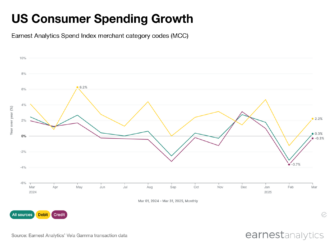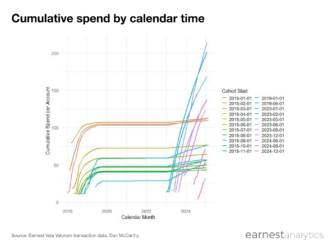Leveraging Alt-Data at Small-Medium Sized Funds

These days, it seems that a new alternative data product hits the market every week. However, not all datasets are created equal, and even the best datasets can fall short without the correct processes and understanding.
At Earnest, we work with institutional clients on both ends of the resource spectrum — from funds with teams of data scientists/analysts/engineers to those without any dedicated data resource. From what we’ve seen, funds without a dedicated data team who successfully use alt-data in their process typically exhibit the following traits:
1) Focus on datasets with a historical correlation
This may sound obvious but there are plenty of datasets that purport to be analogous to one behavior or another — e.g. social media sentiment or customer reviews (weak signal) — versus something that directly relates to a reported company metric e.g. consumer transaction data to reported net sales, or tracking auto dealer inventories online to measure unit sales (strong signal).
2) Understand where the data comes from, what it does well, and — perhaps most critically — its biases and limitations
For instance, a US consumer transaction panel can be a great indicator of ticket purchases by US residents at SeaWorld (SEAS), but is blind to purchases made via OTA’s (indistinct billing) or by foreign tourists (not part of the panel).
3) Use alt-data as one of multiple inputs to their decision making process
One dataset may be great at anticipating top-line results (e.g. restaurant sales), while traditional research calls with suppliers provide perspective on costs impacting the bottom line (e.g. chicken wing prices). Together, these sources provide a more holistic picture of company performance.
4) Look beyond anticipating just the quarter
When preparing to meet with company management, data can be helpful to develop sophisticated and substantiated questions probing a longer term thesis. This can be as simple as asking about declining unique shoppers, to drilling down into retention of shoppers and their lifetime-value, or reviewing performance by geography to question management’s weather-related comments. (Shameless Plug for EarnestQuery).
5) Leverage their vendors
Quality providers are willing and able to share a great deal of what goes into their process and how they’re interpreting a given situation, context you can learn from. Each dataset has its nuances. You should feel you’re learning from your vendors rather than teaching them about a given company.
How to action this? Look at what data is available for the industries you follow, find a dataset and vendor that complements your skill-set, and test it in your process with a trial. Pareto’s principle tends to apply as you glean much of the value in the first 20% of effort (yes, some effort is required), followed by a long tail to leverage every last aspect of a dataset.
Lastly, is all this priced in? You only need to look at the many double digit moves following company reports this 2Q18 earnings season — right across the spectrum of market capitalization — to see that’s not the case. Will it be one day? Trading the quarter maybe… eventually… once the majority of funds (hedge and mutual) are using alt-data, but that’s far from true today. Longer term, just like working with experts, surveys, and other research tools before now, it’s the use of the tool (questions asked of the data) that becomes the ‘edge’ rather than the tool (data) itself.











